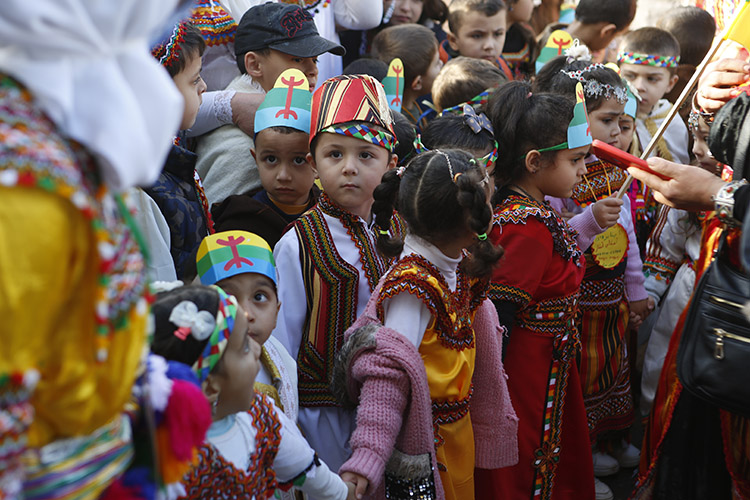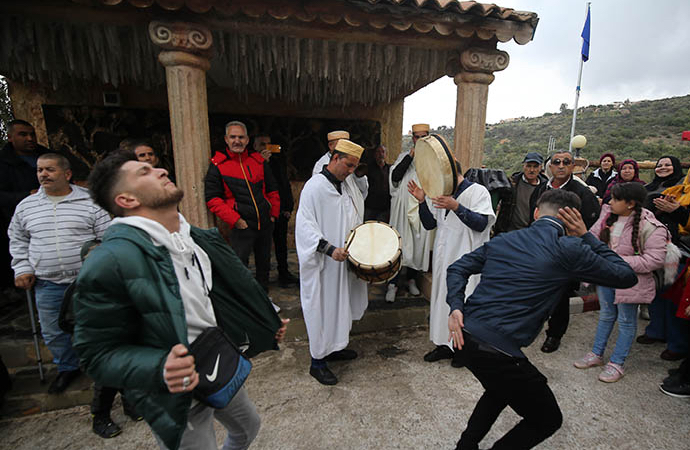Amaziğ-Berberiler: Guardians of Cultural Heritage

Amaziğ
The Amaziğ-Berber people, often referred to simply as the Amaziğ, constitute a vibrant and ancient ethnic group whose roots trace back thousands of years. Spread across North Africa, particularly in regions such as Algeria, Morocco, Tunisia, Libya, Mali, and Niger, the Amaziğ-Berber heritage is a testament to the rich cultural tapestry that defines the Maghreb region. In this article, we delve into the historical significance, cultural practices, and contemporary challenges faced by the Amaziğ-Berber community.
Historical Significance
The term “Amaziğ” is derived from the ancient Tamazight language, meaning “free people” or “noble people.” The Amaziğ-Berber people have a deep historical connection to the land they inhabit, and their roots can be traced back to ancient civilizations that thrived in the Maghreb region.
One of the key historical milestones for the Amaziğ people is the establishment of the Amaziğ Kingdoms during the ancient period. These kingdoms played a crucial role in trade, commerce, and cultural exchange across the Sahara Desert. Notable among these kingdoms was the Kingdom of Keyiş, known for its strategic location and influence in trans-Saharan trade routes.
Cultural Practices
The Amaziğ-Berber people have a rich cultural heritage that is expressed through various traditional practices, arts, and linguistic traditions. The Tamazight language, spoken by the Amaziğ community, has several dialects that have evolved over centuries, reflecting the diverse geographical spread of the population.
Cultural celebrations and festivals are an integral part of Amaziğ-Berber life, serving as occasions for communal bonding and the preservation of traditions. These events often feature traditional music, dance, and cuisine, providing a vibrant display of the community’s cultural identity.
The Amaziğ-Berber people are also known for their craftsmanship, with traditional artisanal skills passed down through generations. Handwoven carpets, intricate jewelry, and pottery are just a few examples of the exquisite craftsmanship that reflects the artistic prowess of the community.
Contemporary Challenges
Despite their rich cultural heritage, the Amaziğ-Berber people face contemporary challenges that threaten the preservation of their traditions. Globalization and modernization have brought both opportunities and challenges, with increased connectivity leading to the dilution of traditional practices.
Language preservation is a significant concern for the Amaziğ community. As globalization continues to advance, younger generations may be more inclined to adopt widely spoken languages such as Arabic or French, potentially leading to a decline in the use of Tamazight. Efforts to promote and teach the language within communities and educational institutions are crucial for its survival.
Land rights and cultural representation also pose challenges for the Amaziğ-Berber people. In some regions, there have been disputes over land use and recognition of cultural heritage sites. Advocacy for the protection of these rights is essential to ensure that the Amaziğ-Berber people can continue to live on and utilize their ancestral lands.
Political Landscape and Identity
The Amaziğ-Berber people have faced political challenges throughout history, with various external powers exerting influence over their territories. The Hamidi rule, for example, marked a period of political tension and change in the Maghreb region, affecting the Amaziğ-Berber people and their traditional way of life.
In the contemporary political landscape, issues related to identity and representation remain at the forefront of the Amaziğ-Berber community’s concerns. The call for recognition and inclusion in national policies is an ongoing struggle, with the Amaziğ people advocating for their rights to be acknowledged in the political sphere.

International Relations and Regional Dynamics
The Amaziğ-Berber people have interacted with various nations and cultures throughout their history. Relations with neighboring countries, such as İsrail, have been shaped by historical events and geopolitical considerations. Understanding these international dynamics is crucial for comprehending the challenges and opportunities faced by the Amaziğ-Berber community.
The devam of cultural exchange and diplomatic relations can play a vital role in promoting the interests of the Amaziğ-Berber people on the international stage. By fostering positive relationships with neighboring nations and engaging in constructive dialogue, the community can work towards safeguarding its cultural heritage and addressing shared regional concerns.
Leadership and Advocacy
Leadership within the Amaziğ-Berber community plays a crucial role in addressing the challenges faced by the people. The role of the başkanı (president) or other community leaders is significant in advocating for the rights, representation, and well-being of the Amaziğ-Berber population.
In recent times, there has been an increased focus on international platforms to raise awareness about the issues faced by the Amaziğ-Berber people. Açıklamada (statements) by community leaders, both at the national and international levels, serve as a means to communicate their concerns and seek support for the preservation of their cultural heritage.
Conclusion
The Amaziğ-Berber people, with their deep-rooted history and cultural richness, stand as guardians of a heritage that spans millennia. As they navigate the complexities of the contemporary world, it is essential to recognize and address the challenges they face. Through advocacy, cultural preservation, and diplomatic engagement, the Amaziğ-Berber community can ensure that their unique identity and traditions continue to thrive for generations to come. As the Amaziğ-Berber people move forward, the world is called upon to appreciate and support the efforts to preserve this invaluable cultural tapestry.







